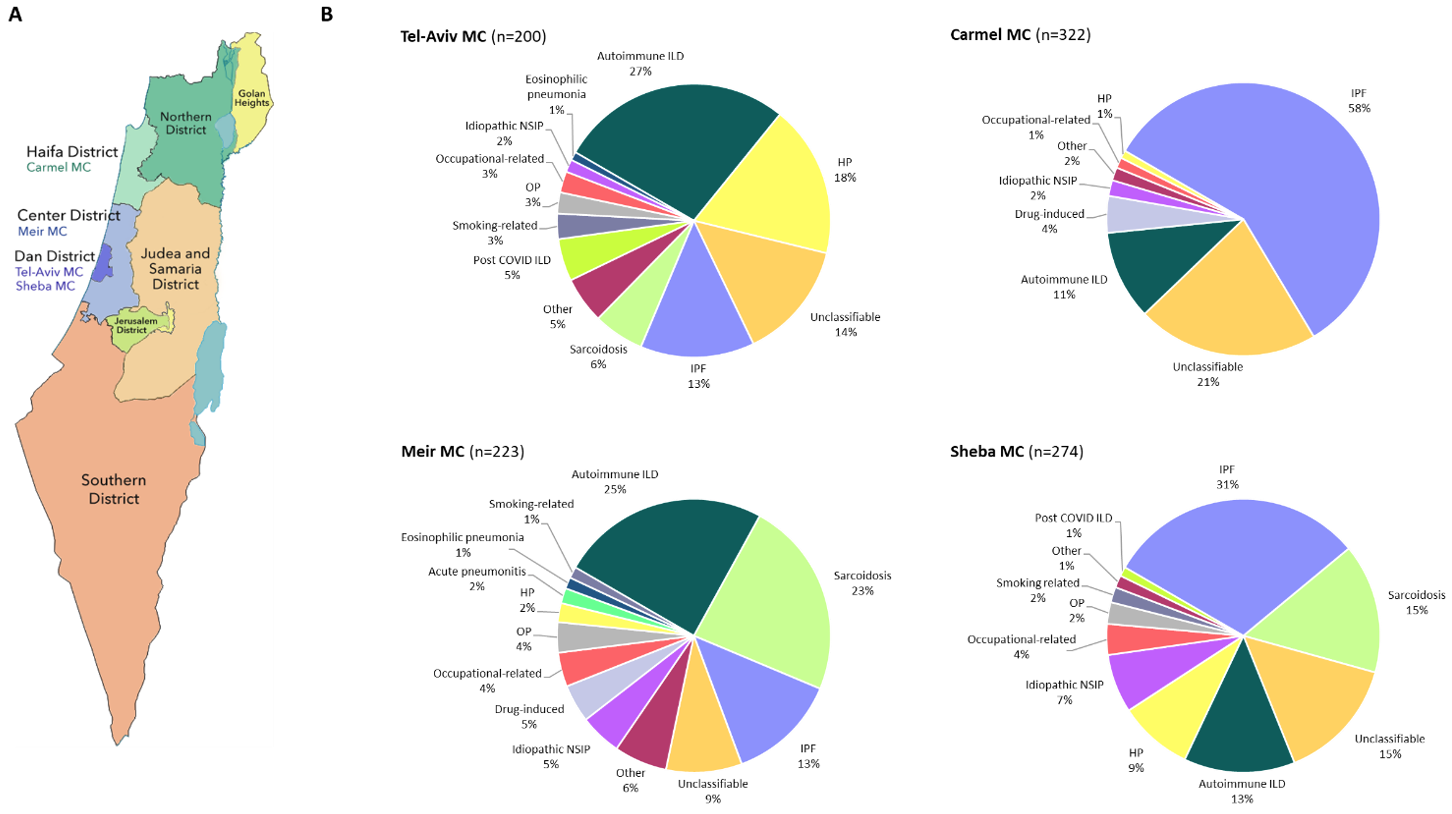Abstract
Introduction: Interstitial lung disease (ILD) encompass over 200 disorders that diffusely affect the lung parenchyma. There have been no previous reports on ILDs in the Israeli population, that may have unique characteristics.
Aims and Objective: To describe the characteristics of ILDs in Israel, using data of over 1000 patients from four large medical centers (MC).
Methods: All registries were retrospective, except that of Tel Aviv MC which was prospective. Sarcoidosis patients were included provided they had interstitial lung involvement.
Results: The four main districts (Dan, Center, Haifa, Northern) that are serviced by our four MCs are home to 67.8% of Israel?s population (Figure 1A). In Tel Aviv and Meir MCs, there was equal representation for males and females, while male sex was more prevalent in Sheba MC (58%) and Carmel MC (68%). Most patients (range 56%-59%) in each MC worked in at least one job that involved inhalational exposure to substances. Figure 1B depicts the relative frequency of ILD diagnoses in each MC. In Tel Aviv and Meir MCs, the most common diagnosis was autoimmune ILD (27% and 25%, respectively), while in Carmel and Sheba MCs it was IPF (58% and 31%). Age, % males, and mean pack-years were highest in Carmel MC, potentially explaining the unusually high frequency of IPF.
Conclusions: There was significant variation between different centers in Israel in sex, age, smoking, exposures, and ILD diagnoses, despite Israel being a relatively small country.